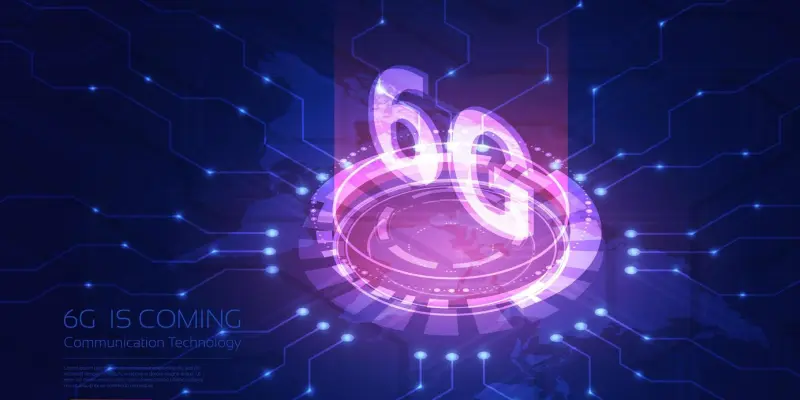Europe is at a pivotal point in its quest for 5G dominance and the emergence of 6G technology. As the continent progresses steadily with 5G adoption, projected to cover 30 percent of mobile connections by the end of 2024, it still lags behind global leaders like North America, East Asia, and the Gulf Cooperation Council states. This lag has significant implications for Europe’s economic and technological landscape. 5G represents a critical platform for economic growth in Europe. For instance, in 2023, the mobile industry contributed €1.1 trillion to the European economy, making up five percent of the GDP and supporting over three million jobs. By 2030, it is expected that 5G will add €164 billion to the European economy, with 80 percent of the continent’s connections operating on the new standard. These figures illustrate the substantial economic benefits of 5G yet underscore the urgency for Europe to close the gap with other regions.
The Importance of Policy Reforms
Regulatory Challenges and Investment Needs
A central theme in the pursuit of 5G and 6G dominance is the necessity for policy reforms and supply chain resilience. Börje Ekholm, President and CEO of Ericsson, emphasizes that while companies like Ericsson are heavily investing in Research and Development (R&D) in Europe, the continent’s slow regulatory response and lack of supportive policies hinder these efforts. Other global regions are advancing through strategic investment, policy, and regulatory support, posing a risk to Europe’s competitive edge.
Marie Hogan, head of 6G portfolio strategy and supply chain development at Ericsson, reinforces the importance of a global and flexible supply chain to navigate the evolving landscape of 5G and beyond. Ericsson’s robust presence across Europe, Asia, and America—spanning production facilities in the U.S., Brazil, Mexico, India, China, Poland, and Romania—highlights the company’s commitment to meeting market demands swiftly through geographical diversity. This strategy is crucial as the world transitions from 5G to 6G.
The Transition to 6G
The Cyber-Physical World and Technological Advancements
As the industry looks towards 6G, anticipated to emerge around 2030, the focus shifts to a “cyber-physical world” where digital and physical realms converge seamlessly. 6G is expected to drive forward technologies like holographic communication, autonomous mobility, and immersive mixed-reality experiences. Hogan acknowledges the unique supply chain challenges posed by 6G, such as the necessity for developing new or evolved components specific to the technology, which demands thorough planning and execution.
Ericsson’s strategy involves conceptualizing at the research level, conducting rigorous testing in specialized facilities, and making calculated decisions on component sourcing and production as 6G standards become concrete. The rise of open networks, such as Open RAN (Radio Access Network), also shapes the 6G landscape. Open networks allow operators to mix and match components from various vendors, fostering innovation and cost reduction, although they also introduce new security and interoperability challenges.
Open Networks and Industry Collaboration
Hogan highlights Ericsson’s dedication to openness, affirming their work with Open RAN, which is expected to play a significant role in future 6G networks. The company anticipates that 6G networks will incorporate a mix of commercial off-the-shelf (COTS) and purpose-built hardware, allowing for flexibility and cost optimization. This approach, already evident in their 5G strategy, aims to ensure a smooth transition to 6G.
Collaboration with industry stakeholders is vital for navigating the complexities of 6G development. Engaging in global forums and working closely with partners to test concepts and scenarios as 6G standards evolve are paramount. Ericsson actively collaborates with various industry bodies, incorporating their specifications into the 3GPP framework, emphasizing the need for unified standards and collective progress.
Policy Recommendations for 5G and 6G Leadership
Digital Single Market and Fair Internet Value Chain
Policy reforms and the establishment of a Digital Single Market in Europe are critical to unlocking the potential of 5G and setting the stage for 6G. The GSMA, a global mobile industry association, recommends several policy actions to stimulate investment and innovation. Completing the Digital Single Market would facilitate seamless development and deployment of mobile services across borders, creating a unified European market. Ensuring fairness in the internet value chain is also essential. Addressing the imbalance between network operators and content providers is crucial to ensuring sustainable investment in network infrastructure. Policymakers are urged to adopt a long-term view on investment and innovation, creating a stable environment for growth, and establish an investment-friendly spectrum policy. Spectrum, being a vital resource for mobile networks, requires a predictable approach to allocation for effective network planning.
Sustainability and Connectivity Investments
A core focus in achieving 5G and 6G leadership is the need for policy overhaul and a resilient supply chain. Börje Ekholm, President and CEO of Ericsson, underscores that while companies like Ericsson invest significantly in Research and Development (R&D) within Europe, the continent’s sluggish regulatory response and absence of supportive policies impede progress. Other regions globally are advancing by leveraging strategic investments and regulatory backing, which threatens Europe’s competitive position. Marie Hogan, head of 6G portfolio strategy and supply chain development at Ericsson, stresses the critical role of a global and adaptable supply chain in navigating the advancing 5G landscape and beyond. Ericsson’s solid presence across Europe, Asia, and America, with production facilities in the U.S., Brazil, Mexico, India, China, Poland, and Romania, underlines its dedication to rapidly meeting market demands through geographic diversification. This approach is essential as the global transition from 5G to 6G accelerates.

